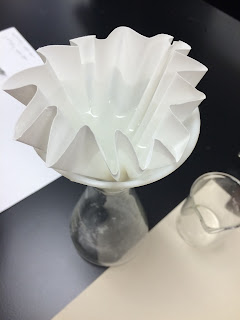http://www.solpass.org/6-8Science/8s/images/acid-base_properties-small.png
|
The first types of acids and bases we talked about were Arrhenius, where the acids produce hydrogen ions in a solution, and bases produce hydroxide ions in a solution. Depending on what they are reacting with, the compound will break apart and the hydrogen or hydroxide concentration will in turn increase. This will depend on what is being dissolved. Something else to remember is that water is an amphoteric substance, which means that it can be an acid or a base.
pH scale for acids and bases:
0-6.9 acidic
7.0 neutral
7.1-14 basic
The next type we learned about was Bronsted- Lowery acids and bases. In this type, the acids will donate a proton (H+) and the bases will accept a proton. In these, there are also conjugate acids and bases, where acids will produce a conjugate base, and vice versa. Here is how this works:
http://study.com/cimages/multimages/16/bronstedlowryexample2complete.png
|
http://chemed.chem.purdue.edu/genchem/topicreview/bp/bronsted/bronsted.htmlhttp://www.qldscienceteachers.com/junior-science/chemistry/acids-and-bases





